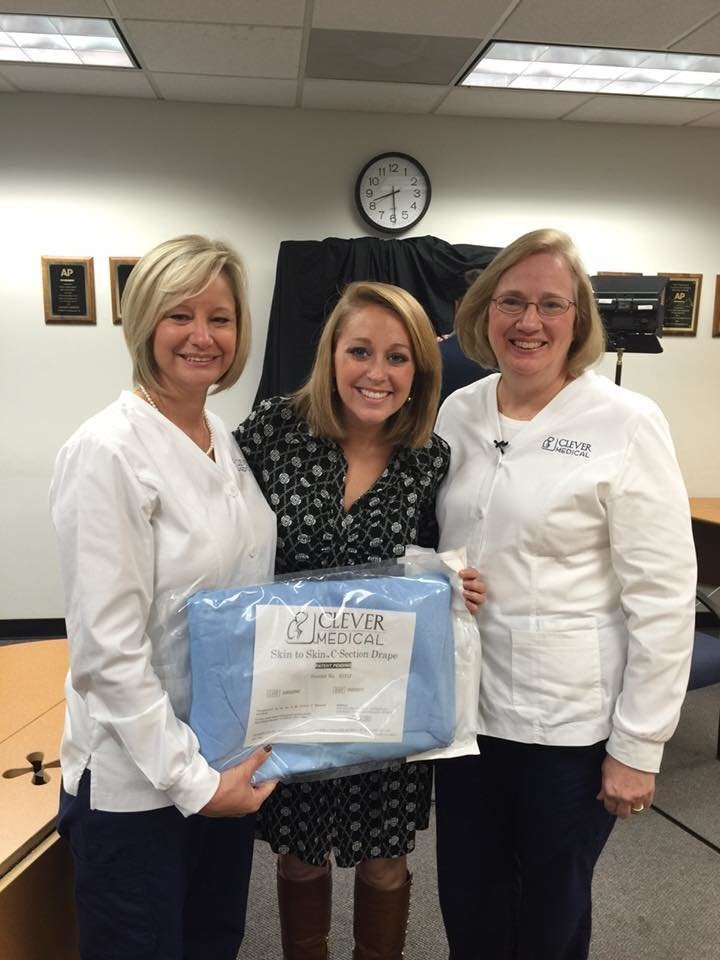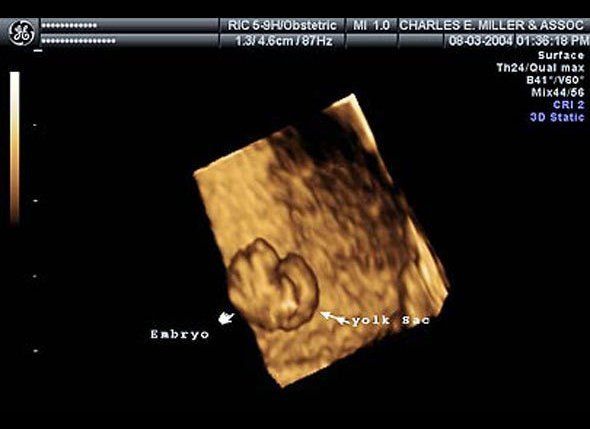A group of labor and delivery nurses have developed a way to give mothers who deliver their babies via C-section a powerful maternal experience.
Registered nurses Kim Jarrelle, Debbie Burbic and Jess Niccoli created the Clever Medical Immediate Skin to Skin C-Section drape -- a surgical drape which, as its name suggests, allows new moms who delivered via Caesarean section to experience the amazing benefits of skin-to-skin contact with their babies just after giving birth.
"We wanted to come up with a way to provide moms that are not afforded the opportunity to have a vaginal birth the same immediate skin-to-skin, bonding experience in the operating room," the inventors told The Huffington Post.
"We have all seen thousands of births, both vaginal and C-section," the nurses continued. "The experiences for the mother and baby are very different. We felt that a mother having a C-section should be able to have the same experience. Our genuine desire all along has been to improve the immediate connection between mother and baby."
The benefits of skin-to-skin contact are many, the inventors explained, citing positive social, developmental and physical effects like early initiation and longer duration of breastfeeding, increased maternal-infant interaction, greater tactile and verbal stimulation of the infant by the mother, mediation of the newborns' stress response, greater relaxation, reduction in crying and better physiological regulation and stabilization.
For the mother, skin-to-skin contact can also be highly beneficial. Jarrelle, Burbic and Niccoli also cited research that shows that form of bonding can lead to a release of oxytocin, which facilitates control of postpartum bleeding, increased reports of maternal satisfaction and positive feelings of relaxation and well-being, decreased reports of maternal anxiety and stress, higher confidence with breastfeeding and increased maternal affection and attachment.

While most hospital protocols facilitate skin-to-skin contact immediately after vaginal birth, mothers who deliver via C-section don't typically have that opportunity. Because the operating room environment required for C-section birth is unique and involves different routines and technology than in other delivery rooms, there are obstacles to skin-to-skin contact, the nurses told HuffPost. These include the lower room temperature, the need for a sterile operative field and highly controlled environment and the close surveillance of the mother by the anesthesiologist.
"Because of these differences, many misperceptions, fears and lack of understanding among health care providers commonly exist regarding the standard of care for skin-to-skin contact (SSC)," the nurses told HuffPost, adding, "These misperceptions and fears create many challenges to the adoption of SSC in the operating room. Thus, it is common practice in the operating suite for the newborn baby to be placed under a radiant warmer and swaddled or transported directly to the nursery. All of these options result in the delay of immediate bonding between mother and her newborn baby."
While recent evidence has supported the feasibility of allowing skin-to-skin contact after C-section births, the biggest obstacle remains the need for a sterile field, which creates a physical barrier between the mother and her baby. That's what Jarrelle, Burbic and Niccoli hope to address with their innovative surgical drape.

"The Clever Medical Immediate Skin-to-Skin C-Section drape allows the obstetrician to reach through a pre-designed portal in the main drape to place the infant on the mother’s chest immediately after delivery without compromising sterility," the inventors explained.
The three nurses started developing their idea three years ago while gathered in Jarrelle's dining room. "Our goal is to change the culture in the operating room during a cesarean section," they said. "We want to create the same experience for mom and baby that they might have if she had a vaginal delivery."
Today, the drapes are available for hospital purchase and have been implemented in hospitals in Virginia, California and Michigan -- to highly positive reviews.
"Right before the baby is passed through the drape we tell mom to look up and see her baby as the obstetrician passes the baby through, with the help of the baby nurse, onto her chest," the trio explained. "There is not a dry eye in the operating suite. Many times the baby is nursing before they leave the operating room."
Added Jarrelle, "Mom is and always should be the first one to hold her baby."
Also on HuffPost:
